
Suzuki Vitara Hybrid Review

Introduction
The Suzuki Vitara is a compact SUV. Unfortunately, it has always been a bit forgettable, but in our opinion, that is a tad harsh as it has got a lot to offer.
Yes, it is a middle-of-the-road car (no, not literally) and a decent all-rounder: something that tends to tick all the right boxes but does so modestly without a sense of theatre or panache. It won’t have the big boys quaking in their boots, but the Vitara generally competes well up against its main rivals.
Select's rating score* - 3.4 / 5
At a Glance
It is not the prettiest car, but Suzuki has added some touches that make it look the part.
The front comes across as quite mean. And, although it is not fooling anyone, from above, it does look as though the Range Rover Sport has inspired the design. It features a thick-looking bonnet lid with vertical sides, which the rest of the car protrudes from. That is where the similarities end, though.
The grille has three chrome vertical strips on each side of the front's sharpened 'S' badge. Plus, it has got a prominent ‘n’ shape to the bodywork overhanging the number plate. Then there are sports creases sitting above the fog lights, with day running lights in a chrome housing on either side.
Down the side, there is a sizeable crease that begins above the rear wheel arch, extending downwards at a slight angle along the doors. Blackened side skirts add a level of sportiness, while there is a slight slope to the roof, which is also black.
The rear looks rather ordinary, with only the slightest overhang from a rear spoiler. Then there are the rear lights which look like they are popping out from the bodywork. Sadly, it is all a little uninspired.
Overall, though, the Vitara has far more of a rugged, off-road appearance than most of its challengers. So, if you want an SUV that looks like a proper SUV, then the Vitara may appeal to you.
Suzuki has never been known for pretty cars, so this is a decent effort overall. And that is just as well, as the small SUV segment is fast becoming an essential factor for any car manufacturer.
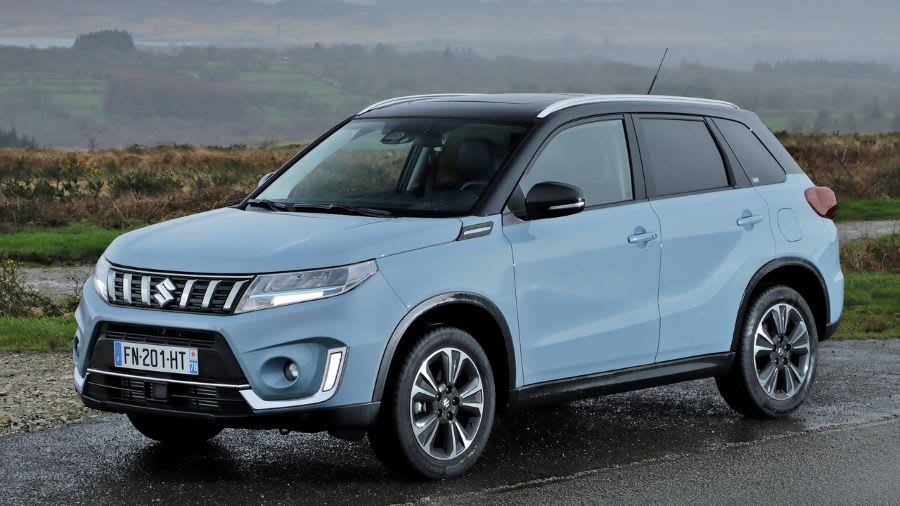
Key Features
All Suzuki Vitaras are hybrids these days. But, for the moment, there is still a choice of ‘mild’ hybrid and ‘full’ self-charging hybrid.
There are two trims to choose from. SZ-T features 17-inch alloys, dual-sensor brake support, Apple CarPlay/Android Auto, adaptive cruise control, and a rear-view camera. There is also a seven-inch infotainment touchscreen with DAB radio and SatNav.
The SZ5 adds 17-inch polished-effect alloys and keyless entry and start. It also boasts a panoramic sunroof, plus front and rear parking sensors.
It also has lots of other safety technology, which we will cover later.
The mild-hybrid features a 1.4-litre petrol producing 129PS, while the full hybrid is a 1.5-litre petrol. Curiously, though, it is less potent than the 1.4-litre, at only 115PS. This is because, although the electric motor adds around 30PS, it doesn’t offer it at peak output - the point at which a car’s horsepower figure is measured. Instead, it adds it at lower revs – although you wouldn’t know it, as it’s still slower than the mild hybrid.
What is also confusing is the range of transmission and drive options.
With the entry-level SZ-T trim, the mild hybrid is available with two-wheel drive as a manual or automatic. It is also available with four-wheel drive as a manual. But the full hybrid is only available with two-wheel drive and an AGS gearbox (which we will explain shortly).
With the SZ5 trim, the mild hybrid is available with two-wheel drive or four-wheel drive, but only with a manual (no automatic is offered). Meanwhile, the full hybrid is also offered with two-wheel drive or four-wheel drive, but only with the AGS gearbox.
The choices don’t seem to follow much of a pattern.
It is the full hybrid we are interested in. So, we took one on a test drive to see how it fairs. We are in the SZ5 trim with four-wheel drive, the most expensive model.
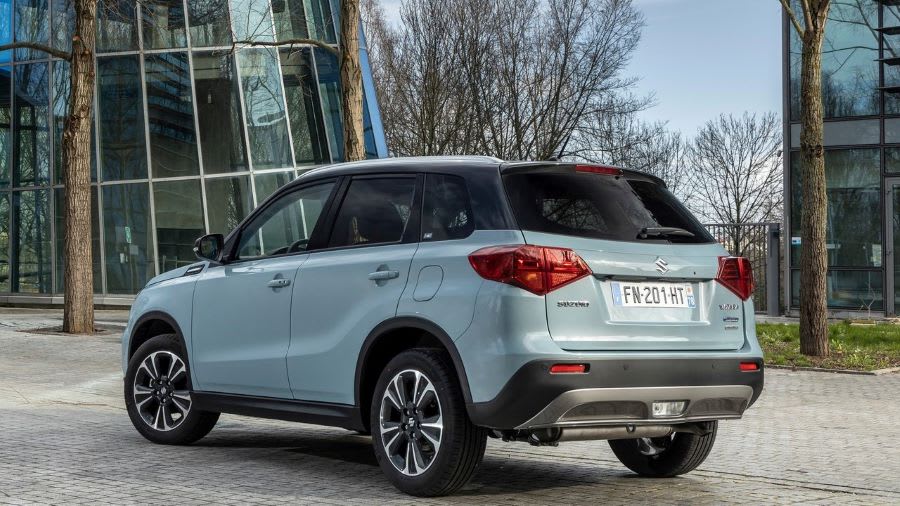
Performance & Drive
Although the 1.5-litre petrol engine in our full hybrid isn’t as powerful as the mild hybrid, the difference between the two isn’t that noticeable.
The engine seems reasonably well refined, although it is noisy when pushed.
You get from a standing start to 62mph in 13.5-seconds. This is partly due to the four-wheel-drive system, which adds weight (two-wheel drive is nearly a second faster).
Admittedly it doesn't feel that slow, but we didn't expect the performance to be significantly less than the mild hybrid. This version manages the same in 9.5-seconds in two-wheel drive and 10.2-seconds in four-wheel drive.
You can run on pure electric juice alone, but the battery is just 0.84kWh, so it is only suitable for short distances and low speeds around town. Also, you need to have a right foot made of feathers to avoid forcing the engine to switch back on. So don't expect to drive on a motorway without it running.
As we said earlier, the full hybrid Vitara has an AGS gearbox, which means automatic gear shift. It is also referred to as an automatic manual gearbox. If that sounds like a contradiction, it isn’t. Essentially, it is designed like a conventional manual, but it uses an automated system to deploy the clutch and carry out the physical act of changing gear. Conventional automatics have a different design by comparison.
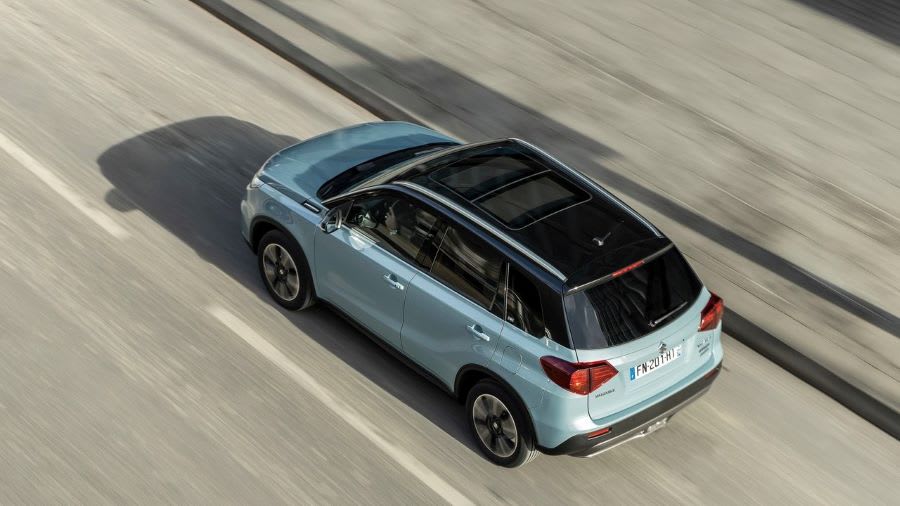
AGS gearboxes are often shaky and lethargic, and, though Suzuki seems to have implemented it well, it is slower than a conventional automatic. Plus, it is inferior to the automatic transmissions offered by rivals.
Suzuki published an article a few years back listing the benefits of AGS. While none of them is untrue, many of the ‘positives’ they catalogue are also features of a conventional automatic gearbox. We wish they would offer a regular automatic (which you can get with the mild hybrid).
The ride is good, with a firm but comfy suspension setup. It smooths out creases and bulges in the road nicely, and it feels planted when you are going quickly.
In terms of handling, it is okay, too. It is impressive at going around bends, despite the higher centre of gravity compared with a hatchback. And the body lean is well controlled, so you can have a little bit of fun with it. However, the steering is light. This means the Suzuki is great for driving around town centres, but it doesn’t weight up when going faster. Subsequently, it is too light to be honing madly around bends. There is minimal feel or feedback through the wheel.
Driving rapidly maximises the wind and tyre noise, too. This is a car with low-speed driving in mind.
The four-wheel drive doesn't add much to the driving experience. Despite its looks, it isn't intended as an off-roader. And the performance isn't there to justify the extra expense.
Indeed, there are better handling cars, but it does the job well given its price point.
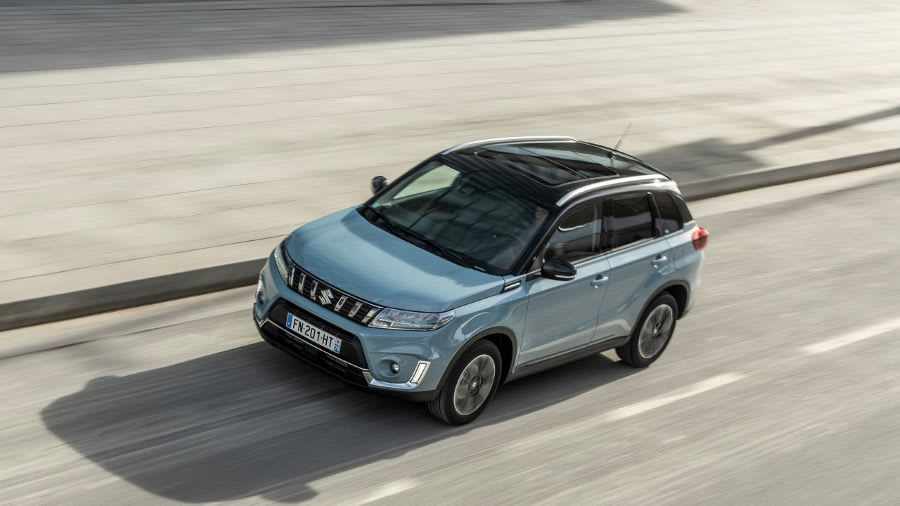
Running Costs & Emissions
Our full hybrid manages 48.4mpg with four-wheel drive, producing 132g/km of CO2 emissions.
The two-wheel drive version does 53.0mpg, reducing emissions to 121g/km CO2.
By comparison, the mild hybrid manages 48.3mpg with the four-wheel drive manual, generating 132g/km CO2 emissions.
The two-wheel drive variant claims fuel economy figures of 52.7mpg and releases emissions of 121g/km CO2 with the manual, and 49.5mpg and 129g/km of CO2 with the conventional auto ‘box.
These aren't alarming figures for a petrol, but you will get similar, if not better, from many diesels nowadays. That said, they are becoming less common on small SUVs, with many manufacturers now opting for petrols and petrol hybrids.
Servicing costs are about average. So you will be looking at around £200 to £250. And, as you are leasing, you won't be too bothered by this, but it comes with a three-year, 60,000-mile warranty. So it is kind of interesting to know, all the same.
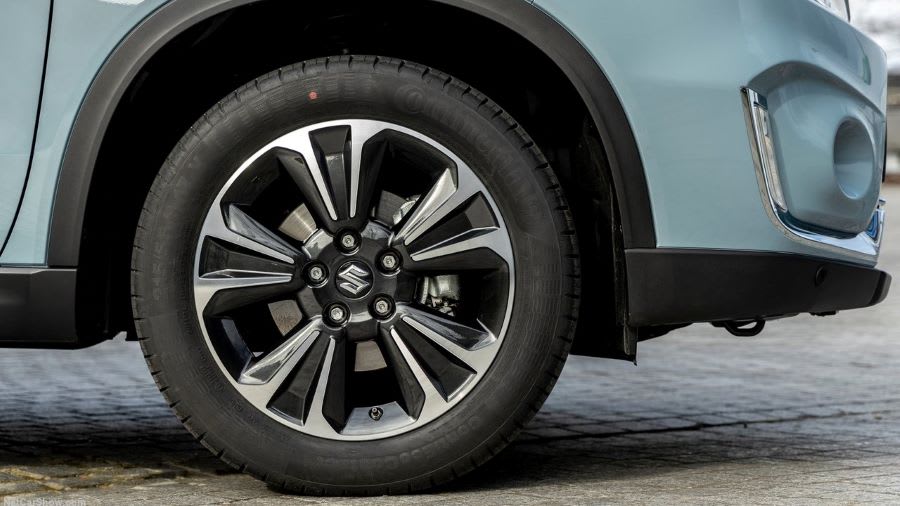
Interior & Technology
The interior is nothing special, but it looks nice and is sensibly laid out. There are some soft-to-the-touch surfaces, and our interior features some shiny piano-black plastic.
Regrettably, thin, scratchy plastics are never far away, which cheapens the feel somewhat.
Finding a suitable driving position is simple as there is plenty of movement in the seats and steering wheel. Those who want a high-up ‘laud-it-over-other-motorists’ driving position are well catered for.
The seats are snug, although adjustable lumbar support is a notable omission. Meanwhile, there is a lot of pleasant silver trim to break up the dark colours, including on the steering wheel.
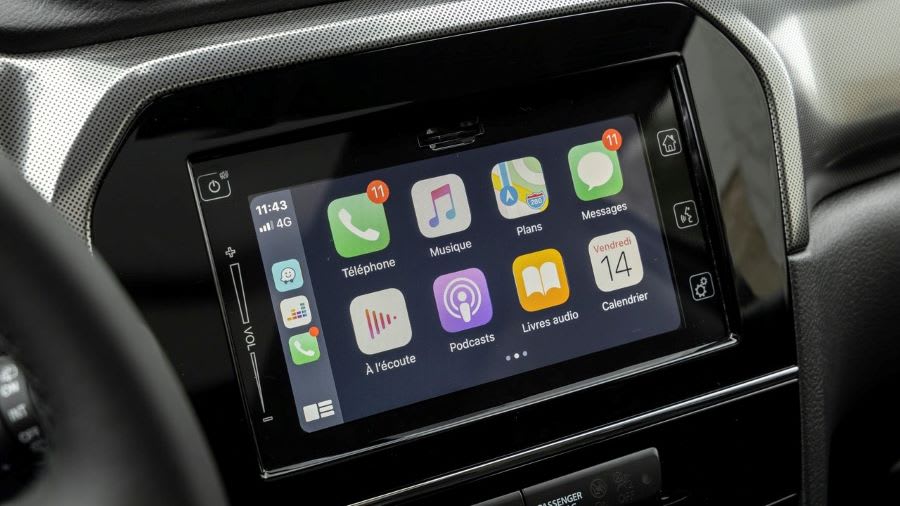
The infotainment screen sits in the middle of the dashboard, but it is lower down than in most cars nowadays. Unfortunately, this positioning means having to move your eyes a little bit further away from the road to look at it on the move. Thankfully, physical buttons to operate the climate control can still be found underneath it, while the switches on the steering wheel also help.
The system is straightforward, but it isn’t massively responsive and feels basic. What’s more, the touch-sensitive buttons to adjust various functions, including a slider for the volume, are awkward to use, especially on the move. The addition of Apple CarPlay/Android Auto connectivity will come as a relief, but only wired versions are available, not wireless. The system isn't flawed, but most rival cars offer better.
That quite neatly sums up the interior. It looks good, but it is only half-decent, and it is outperformed its competitors. That said, our SZ5 test model features suede on the seats, too, which is a nice touch.
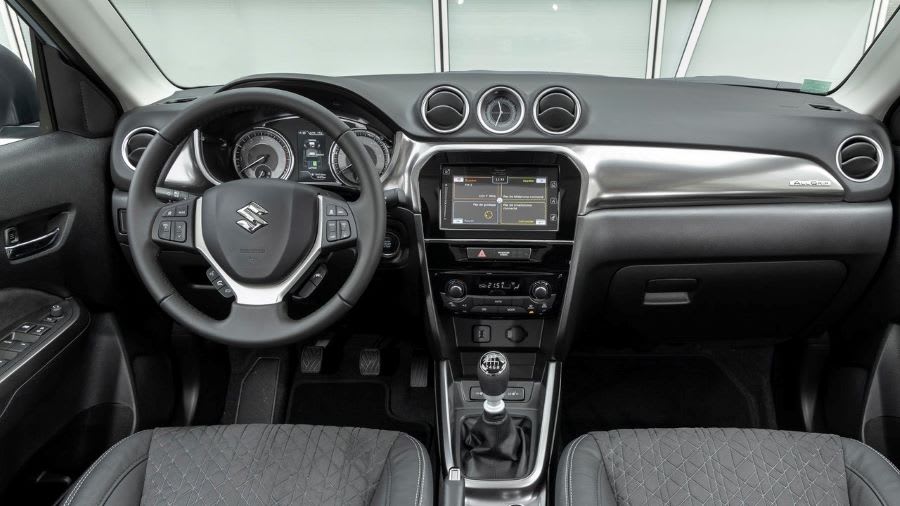
Practicality & Boot Space
The size of the car means that the driver and front passenger are well accommodated, with a wholesome amount of leg and headroom. But this is reduced slightly on the top-of-the-range version due to the panoramic sunroof.
There is also worthy legroom and headroom in the back, so taller passengers won’t struggle, although the middle seat sits higher up. Nevertheless, two fully grown adults will be comfortable sitting in the back for the duration of a long journey.
There are cubby spaces to put things in, but none are huge. You will find a USB port in the front, while there are two cupholders. However, they are pretty far back, making reaching for them on the move tricky.
The boot opens out to reveal 289-litres of space, which expands to around 650-litres with the rear seats down. They fold away in a 60/40 split when you pull a lever at the top of the seats (although this means you need to walk around each side of the car). The seats don't fold completely flat, but they don't leave an awkwardly-shaped ridge, either, so sliding in longer items is a doddle.
The mild-hybrid has a slightly bigger boot at 375-litres, as fewer batteries take up floor space. But some rivals, such as the Ford Puma, offer an even larger boot.
Surprisingly, sliding rear seats aren’t included, as even the smaller Suzuki Ignis offers this. But that is not the case here, despite a higher price tag.
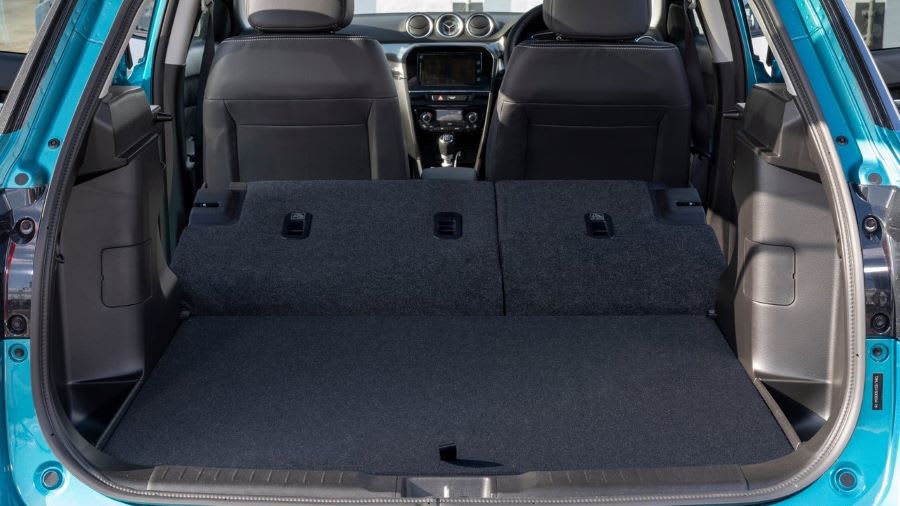
Safety
A few years back, the Suzuki Vitara was vigorously tested by Euro NCAP and was awarded a five-star rating, scoring impressively well.
It was rated at 89 per cent for adult occupants, 85 per cent for children and 75 per cent for safety assists, which sounds great. However, this rating has expired as it was awarded back in 2015.
Since then, Euro NCAP has made its tests far more stringent. So much safety technology has come along since then, so it wouldn't score as highly if the same Vitara were re-tested today.
That said, the Suzuki SUV isn’t the same as it was seven years ago. It includes dual sensor brake support, automatic emergency braking and adaptive cruise control. It also contains blind-spot monitoring, lane-keep assist, lane departure warning and rear cross-traffic alert.
That is a lot of kit as standard – and it outguns some rivals’ offerings.
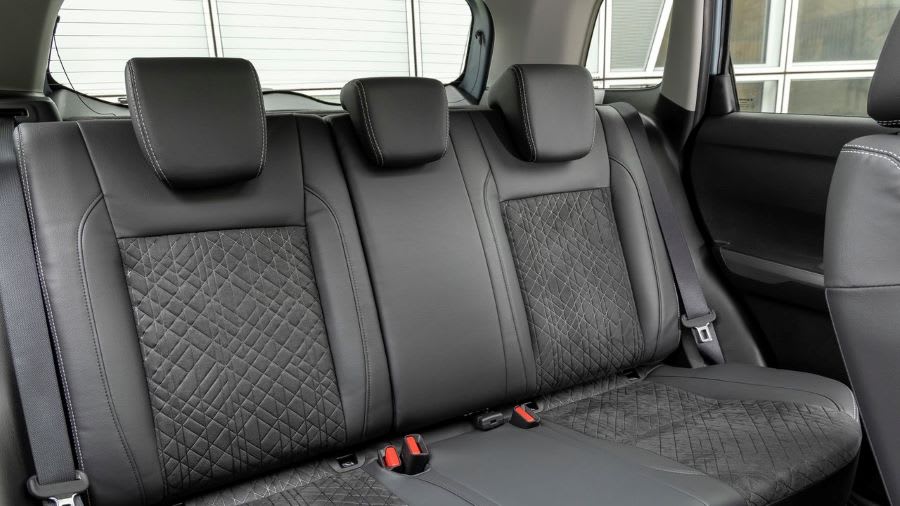
Options
You can add many extras to make the Vitara stand out, with various styling packs costing from a couple of hundred pounds to well over a thousand notes.
Various elements, such as skid plates, door mirrors and grilles, can be added for not much outlay. A rear spoiler costs a fair whack, though, for some reason.
A spare wheel and tyre kit are cheap to add, while you can choose different alloys if you are willing to splash out quite a lot more.
Mudflaps and tow bar accessories are also available.

Rival Cars
There is no shortage of alternatives to consider if you draw up a shortlist. The Ford Puma, Nissan Juke, Renault Captur and Skoda Kamiq are the most apparent challengers - and all have more pleasant interiors.
You may also want to check the Volkswagen T-Cross and Toyota Yaris Cross, while the Seat Arona is also worth having a gander at.
There is still a shortage of ‘full hybrid’ alternatives at the moment, but most offer at least some form of mild-hybrid technology.

Verdict & Next Steps
The Suzuki Vitara is a reasonable effort, and, for the price, it has a lot to offer. However, recommending the full hybrid is a difficult sales pitch.
It is hardly any more economical than the mild hybrid; it has a bigger engine, yet it is more expensive and less powerful. Plus, it doesn’t offer enough of an advantage to be worth bothering with, especially given the ‘automatic manual’ transmission.
In addition, while it is nice to say you own a 'four by four', the four-wheel drive system doesn't make a huge difference other than adding weight. Instead, it makes it slower and less economical, so we would only recommend that if you need to go off-road regularly.
If you do opt for the full hybrid with four-wheel drive (and SZ5 trim), you will also have the irony of knowing that your top-of-the-range and most expensive version is the slowest.
The interior looks pleasant, but you quickly realise it is on the cheap side, and other contenders have done a much better job with their designs. In addition, Suzuki's infotainment system is lacking, and the screen is on the small side by today’s standards.
All these are negatives, though. On the plus side, you get an awful lot of technology and safety equipment, which beats many rivals. It handles well and is decent to drive, despite the lack of performance. The Suzuki is also spacious, practical, and offers more rugged 4x4-style looks compared with its competitors.
Meanwhile, a higher driving position than most of the opposition will suit those who want to feel like they are driving something bigger.
If you are very tall, test out a version with the panoramic sunroof first to make sure you fit, as it does eat into the headroom.
Overall, the Vitara isn’t much to get excited about, but it does what it set out to do – and does it reasonably well. It ticks all the right boxes and offers an affordable solution.
Where to next?
View our latest Suzuki Vitara Hybrid Leasing Deals - from just £362.19 per month inc VAT**
Looking for a great leasing deal? Check out our incredible range of Special Offers
New hybrid car? Read our latest Car Reviews and find the right model for you
Want to know more about leasing? Take a look at our comprehensive Leasing Guides
Interested in everything motoring? Why not catch up on all the latest Car Leasing News.
*Score based on Select’s unique meta score analysis, taking into account the UK’s top five leading independent car website reviews of the Suzuki Vitara Hybrid
**Correct as of 16/03/2022. Based on 9 months initial payment, 5,000 miles over a 48 month lease. Initial payment equivalent to 9 monthly payments or £3,259.7 Ts and Cs apply. Credit is subject to status.





















